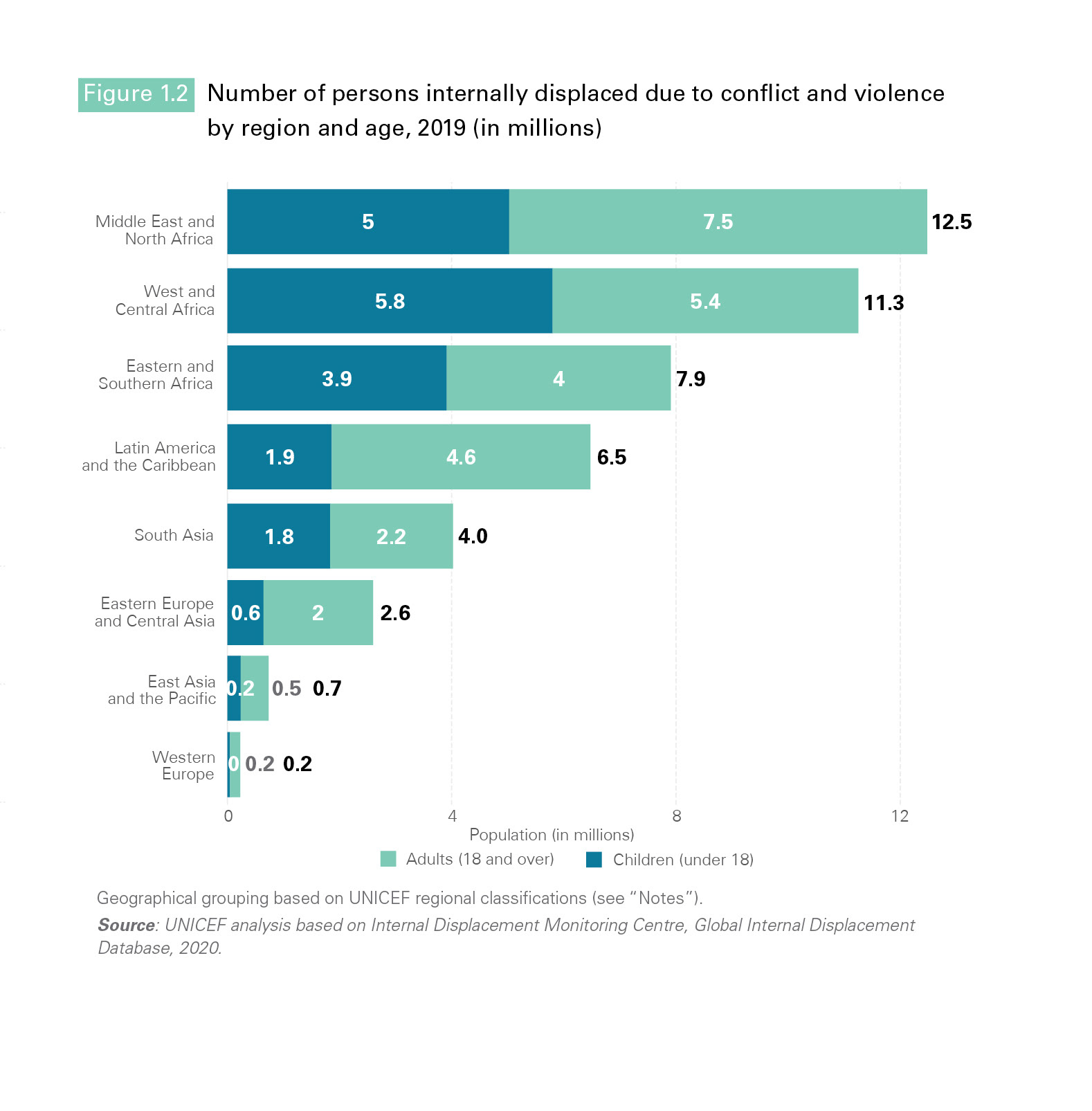Lost at home: The risks and challenges for internally displaced children and the urgent actions needed to protect them
Today, more children than ever before are displaced within their own countries. At the end of 2019, an estimated 46 million people were internally displaced by conflict and violence. More than 4 in 10 – or 19 million – were children. Millions more were displaced by disasters. Forced out of their homes and communities, these children are among the most vulnerable in the world. The ongoing COVID-19 pandemic stands to bring even more harm and uncertainty to their lives.
This report provides the latest data, which demonstrate the scale and scope of internal displacement around the world. It also reveals how internal displacement upends the lives of children, affecting all spheres of their lives:
· It often breaks families apart and forces children to move on their own or live with limited support from families and communities.
· It multiplies protection and safety risks. Internally displaced children are particularly vulnerable to abuse, violence and exploitation as social norms break down and protective services are no longer available.
· It often disrupts education by delaying or entirely interrupting children’s learning, depriving them of the opportunity to reach their full potential.
· It poses challenges to accessing essential services such as safe housing, water and sanitation, and health care or psychological support.
The sum of these deprivations can be particularly acute in the life of a child and cause long-lasting harm.
For millions living in internal displacement, crowded living quarters, limited to no access to clean water and sanitation, and severely curtailed health care are common. Those in hard-to-reach places may also be cut off from mass communications, meaning they are likely to miss out on lifesaving public health messages. These factors set the course for rapid spread of COVID-19. Urgent efforts are needed to address the poor living, WASH, and health care conditions of internally displaced persons to prevent further damage to these already fragile communities and their vulnerable children.


Bruchure layout: Sinae Lee
Infographic/charts: Jiayan He
Video: Jiayan He
Presentation: Jiayan He